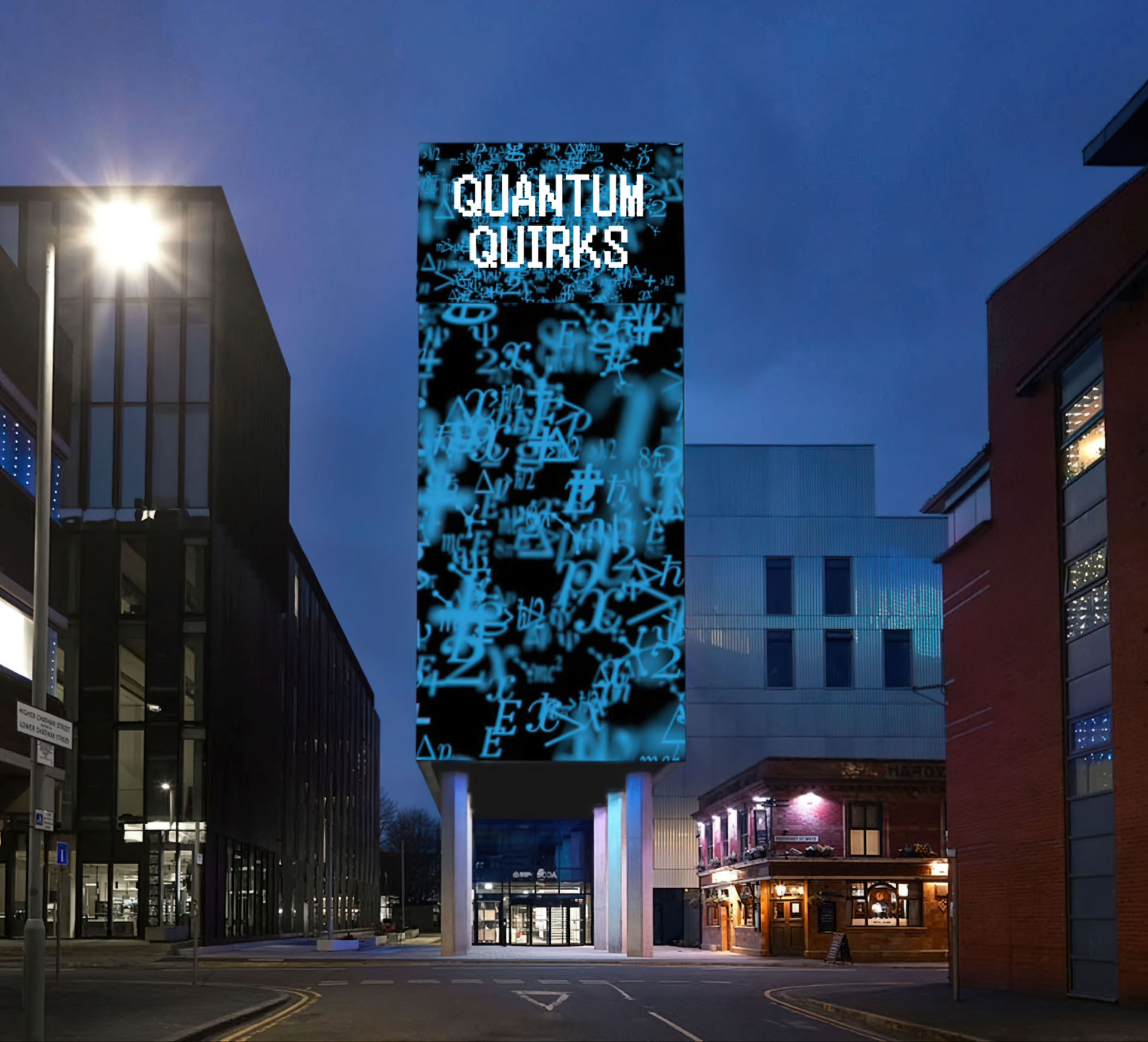The theory of quantum mechanics has profoundly revolutionized the scientific understanding of reality, but it has been a revolution not only for science but also for philosophy and our intuitive knowledge of the world.
In the infinitely small, matter behaves seemingly in a completely eccentric way. Everything that exists is made up of molecules. Molecules are aggregations of atoms, which in turn are assemblies of protons, neutrons, and electrons. However, when observed on a nanoscale, these particles of matter behave very differently from the larger assemblies they form.
An electron or a photon (“particle of light”) is capable of passing through two holes simultaneously, of being in multiple places at the same time, or of rotating in multiple directions simultaneously. Even stranger, these particles seem to be able to communicate instantaneously from one point to another in space, even at astronomical distances.
The almost “magical” theory of quantum mechanics, however, works perfectly and aligns well with experimental data. It not only describes the world of atoms and molecules with impeccable precision but also has numerous applications, from lasers to magnetic resonance imaging, from nuclear energy to genetic engineering, from classical computers to the design of future quantum computers. Yet, there are many aspects that we still cannot understand and that leave us astonished. In a sense, it is truer than our intuition.
However, we know for certain that reality, or what we call the classical view of the world, is not as it appears. That is why I decided to create a spectacular work specifically for this occasion, titled “Quantum Quircks,” for the facade of the Building, to highlight the main paradoxes and peculiarities of the quantum realm. It is precisely on the infinitely small scale, that is, below a certain nanoscale, that properties and effects begin to manifest that could not exist in our macro-world of classical physics.
Therefore, I chose to address the most surprising and mysterious aspects of the quantum world and described each experiment through a series of images that intrigue and engage a wide audience on the most current topics of science. All of this is conveyed through playful and highly engaging forms.
The project, carried out with the scientific advice of Fabio Truc, theoretical physicist, university lecturer, and researcher, has a total duration of 2 minutes and 30 seconds.
The work is divided into six chapters described as follows:
- Entanglement: A term coined by Erwin Schrödinger in 1935, it describes a connection between particles in quantum mechanics, treating them as if they were a single entity. Any action or measurement on the first particle has an instantaneous effect on the second (and vice versa), even if they are at enormous distances from each other. As long as the two particles are not observed, they remain “entangled,” and only the presence of an observer is capable of interfering and “bringing them into reality.”
- Double Slit: The double-slit experiment is a variation of the experiment by scientist Thomas Young, which demonstrates the wave-particle duality of matter. If this experiment is conducted with only one slit open, the particles exhibit corpuscular behavior, behaving like “dots.” However, if both slits are open, the result changes radically, and they behave like waves rather than particles. But things become even stranger when an optical detector is introduced because the behavior reverts to that of particles or “dots.”
- Tunneling Effect: The quantum tunneling effect occurs when a quantum particle (electron or photon), under certain conditions, is able to surpass a barrier even though it does not have enough energy to do so in principle. This result would be impossible in classical physics.
- Wave Function: The wave function allows us to define the different states in which a particle can exist. The particle can be found anywhere within the wave, but its position is associated with a certain probability of existing in a given location at a certain moment. It does not have a definite position, only a probability of being in a certain position. Its ability to be everywhere but with different probabilities highlights its wave-like nature. The particle is both wave and particle.
- Atomic Orbitals: Atomic orbitals are mathematical functions that describe the wave-like nature of an electron in an atom. In the case of the wave associated with the electron in the atom, it represents the probability of finding the electron in a specific position.
- Neutrinos: Neutrinos are elementary particles, but they are not part of the atoms that make up matter; they exist outside of it. They are indivisible (meaning they are not composed of even simpler particles) and are devoid of electric charge, hence they are neutral. And, most importantly, they have an extremely small mass. The oscillation of neutrinos represents the strange phenomenon, awarded the Nobel Prize in 2015 to Takaaki Kajita and Arthur B. McDonald, whereby these subatomic elementary particles exist in three variants (electron, muon, and tau) and can change their identity as they travel through space. In short, they are transformative neutrinos.
